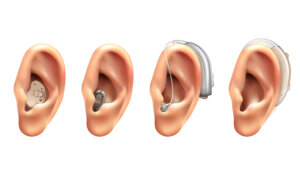
World Sight Day—the most important advocacy and communications day in the eye health calendar—is on 10 October 2019. It aims to focus global attention on vision impairment and blindness.
The International Classification of Diseases 11 (2018) classifies vision impairment into two groups, distance and near presenting vision impairment.
A person’s experience of vision impairment varies depending upon many different factors. This includes for example, the availability of prevention and treatment interventions, access to vision rehabilitation (including assistive products such as glasses or white canes), and whether the person experiences problems with inaccessible buildings, transport and information.
Vision First!
Globally, it is estimated that at least 2.2 billion people have a vision impairment or blindness, of whom at least 1 billion have a vision impairment that could have been prevented or has yet to be addressed.
These 1 billion people includes those with moderate or severe distance vision impairment or blindness due to unaddressed refractive error (123.7 million), cataract (65.2 million), glaucoma (6.9 million), corneal opacities (4.2 million), diabetic retinopathy (3 million), and trachoma (2 million), as well as near vision impairment caused by unaddressed presbyopia (826 million).
In terms of regional differences, the prevalence of distance vision impairment in low- and middle-income regions is estimated to be four times higher than in high-income regions. With regards to near vision, rates of unaddressed near vision impairment are estimated to be greater than 80% in western, eastern and central sub-Saharan Africa, while comparative rates in high-income regions of North America, Australasia, Western Europe, and of Asia-Pacific are reported to be lower than 10%.
Population growth and ageing will increase the risk that more people acquire vision impairment.
Causes
Globally, the leading causes of vision impairment are:
– uncorrected refractive errors
– cataract
– age-related macular degeneration
– glaucoma
– diabetic retinopathy
– corneal opacity trachoma
There is some variation in the causes across countries. For example, the proportion of vision impairment attributable to cataract is higher in low- and middle-income countries than high-income countries. In high income countries, diseases such as diabetic retinopathy, glaucoma and age-related macular degeneration are more common.
Among children, the causes of vision impairment vary considerably across countries. For example, in low-income countries congenital cataract is a leading cause, whereas in high income countries it is more likely to be retinopathy of prematurity.
Strategies to address vision impairment
Effective interventions are available for health promotion, prevention, treatment and rehabilitation to address the entire range of needs associated with eye conditions and vision impairment across the life course. Some are among the most feasible and cost-effective to implement. For example, uncorrected refractive error can be corrected with glasses while cataract surgery can restore vision. Vision rehabilitation is also effective in improving functioning for people with an irreversible vision impairment.
As we mark this year’s World Sight Day, let’s ask ourselves; when was the last time I got an eye exam? My family, friends and colleagues? Let’s pledge to take an eye exam—and encourage others to do the same!











One Response
Thanks for sharing this and other health informations on this platform, it helps to remind us of our need to handle health issues with seriousness, thanks.